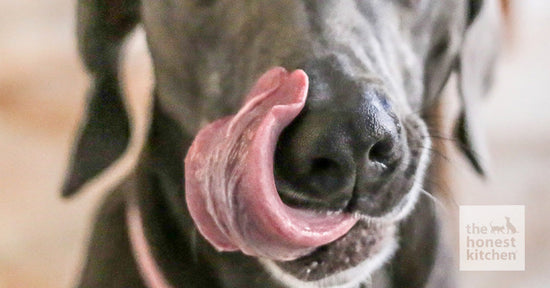Key Factors To Evaluate When Selecting Your Dog's Food

Key Factors To Evaluate When Selecting Your Dog's Food
Just like humans, a dog’s diet is one of the most important pillars that contributes to their health and wellness.
Generally speaking, a balanced diet for a dog includes proteins, carbohydrates, fats, vitamins, minerals, and water. However, the recommended amount of each of these components varies based on your dog’s specific needs. So it’s important to consider the nutrient profile of your dog’s food and choose one that fits their requirements.
In this article, we’ll cover what to think about when choosing dog food, ingredients to avoid (and seek out), and general tips to help you find the perfect food for your dog.
Considerations When Choosing a Dog Food
There are so many dog food options available now that it can be overwhelming trying to pick the right one. But when it comes down to it, you want to begin with a basic, well-rounded diet.
The next step is to consider your dog’s unique characteristics like breed, stats (age, weight, life stage), health history, and the quality of the food.
Your Dog’s Needs
Even though all dogs require a balanced diet, some dogs may need a little more customization based on their breed, age, life stage, weight, health conditions, health history, and general preferences.
For example, a puppy requires more calories than an adult dog or senior dog due to their rapid growth. On the other hand, large-breed dogs that are overweight may require less food than small-breed dogs that are of a healthy weight.
If your dog has certain health conditions, such as allergies, intolerances, or chronic illnesses, you may need to avoid certain ingredients. Or you might want to include a boost in other ingredients to make up for what they’re lacking, such as supplements in their food for skin and coat health or gut health.
Dog Food Quality
The quality of dog food is also an essential component when crafting your dog’s diet. Beyond the designation of “complete and balanced,” look for information about sourcing, quality assurance, and safety.
It’s easy to misunderstand marketing and advertising as fact at times, so it’s important to seek out unbiased sources of information. Some questions to explore include:
Does the company have a board-certified veterinarian nutritionist?
Is the food tested for contaminants? Bacteria? Toxins?
Is the food endorsed by The Association of American Feed Control Officials (AAFCO)?
Does the company have strict lab protocols where the food is produced?
Is the food trialed with dogs? Are the trials done in-home?
Common Ingredients to Avoid in Dog Food
Once you’ve established that a dog food or dog food brand abides by high quality standards, you’ll want to check out the ingredients list. As mentioned, different dogs have different tolerance levels, but certain ingredients can negatively impact many dogs. So be sure to read the pet food labels to identify things like:
Diets High in “Pulses”
Avoid diets that are high in “pulses” — legume-based proteins like peas, lentils, chickpeas, and dry beans.
In small to moderate amounts, some of these ingredients can be helpful in your dog’s diet, especially if they require a grain free diet. However, the U.S. Food and Drug Administration (FDA) has investigated the correlation between dilated cardiomyopathy (DCM) and excessive amounts of legume-based proteins.
Ingredients Sourced From China
It’s best to avoid any dog food with ingredients sourced from China, due to potential contamination and different nutritional standards internationally.
This recommendation dates back to 2007 when the FDA found that dog and cat food contaminated with melamine was killing pets. The contaminated food was traced back to factories in China.
Then, in 2015, the FDA received over 5,000 complaints of illnesses and deaths associated with dogs eating chicken, duck, or sweet potato jerky treats. Many of these included ingredients imported from China, and FDA testing found a slew of contaminants in these treats.
Artificial Preservatives (BHA)
Last, it’s important to avoid dog foods that contain artificial preservatives, particularly butylated-hydroxyanisole (BHA).
Some manufacturers use BHA and BHT in dog foods to prevent fats and oils from spoiling and to help the food stay fresh longer. However, the U.S Department of Health and Human Services has linked BHA to cancer.
Keep in mind, however, that not all preservatives are bad. There are certain types that are safe for dogs, including vitamin E (mixed tocopherols), vitamin C (ascorbic acid), and rosemary.
Benefits of Choosing High-Quality Dog Food
Beyond basic safety standards, it’s important to consider the benefits of high-quality, healthy dog food on your dog’s health. High-quality dog food can support dogs’ physical health, enhancing their quality of life, giving dog owners peace of mind, and contributing to sustainability efforts.
Improved Physical Health
Enhanced Quality of Life
Similar to humans, when dogs eat a high-quality diet, they may experience increased energy, improved digestion and waste management, sharper cognitive function, and reduced behavioral problems. A clear mind, sustained energy, and a happy tummy can all increase the quality of your dog’s life.
Peace of Mind
Sustainability
Some high-quality dog food brands like The Honest Kitchen prioritize sustainability. You can feel good about a smaller carbon footprint by supporting pet food brands that prioritize low-environmental-impact production, ingredient sourcing, and packaging. If you’re looking for a brand that puts sustainability high on its list, check out The Honest Kitchen.
Additional Tips for Choosing the Right Food for Your Dog
1. Consider Your Dog’s Needs
As noted, your dog is unique and likely has individual needs related to their breed, health conditions, preferences, and eating habits. So be sure to check out dog food recipes for specific ages and activity levels.
A couch potato doesn’t need the same food as a young, active dog. And if your pup has any medical conditions, consider a consultation with your vet to work together on a diet to help your furry friend thrive.
2. Do Research and Compare Ingredients
Research. Research. Research. Though research can be tedious, pretty much all dog food labels are available online, so you can easily compare ingredients. The upside of researching online is that you can Google any ingredients that you don’t know.
Online research can also be extremely helpful when considering your budget and availability of the food. When in doubt, your vet will be happy to provide recommendations.
3. If You Decide To Switch, Do It Gradually
Introducing a new food to your pup can be a process, so be sure to do so gradually over 7–10 days to avoid digestive upset. You can do this by mixing your pup’s new food with the old food, decreasing the amount of old food little by little each day.
4. Monitor Your Dog
The final and most important tip to keep in mind throughout the entire process of adjusting your pup’s diet is to monitor them each step of the way. Don't just trust marketing claims — focus on the actual ingredients and analyze your dog’s response to the food.
Be patient. Finding the right food for your dog may take some time and experimentation. And if you need help determining nutritional requirements, talk to your veterinary nutritionist.
Choose The Honest Kitchen Today
As a pet parent, choosing a dog food is not a one-and-done task. Ideally, you’ll be adding and subtracting certain aspects from your pup’s diet as they age and experience shifts in their nutritional needs. Above all, we recommend leaning on research, experts, and your dog’s response when navigating food choices.
And if you’re looking for a place to start your research journey, check out the human grade, sustainable dog food from The Honest Kitchen. From kibble alternatives to wet dog food, toppers, and supplements, there is bound to be a type of food to suit your dog’s needs and taste buds.
Explore our dry, dehydrated, and wet dog food options today!





